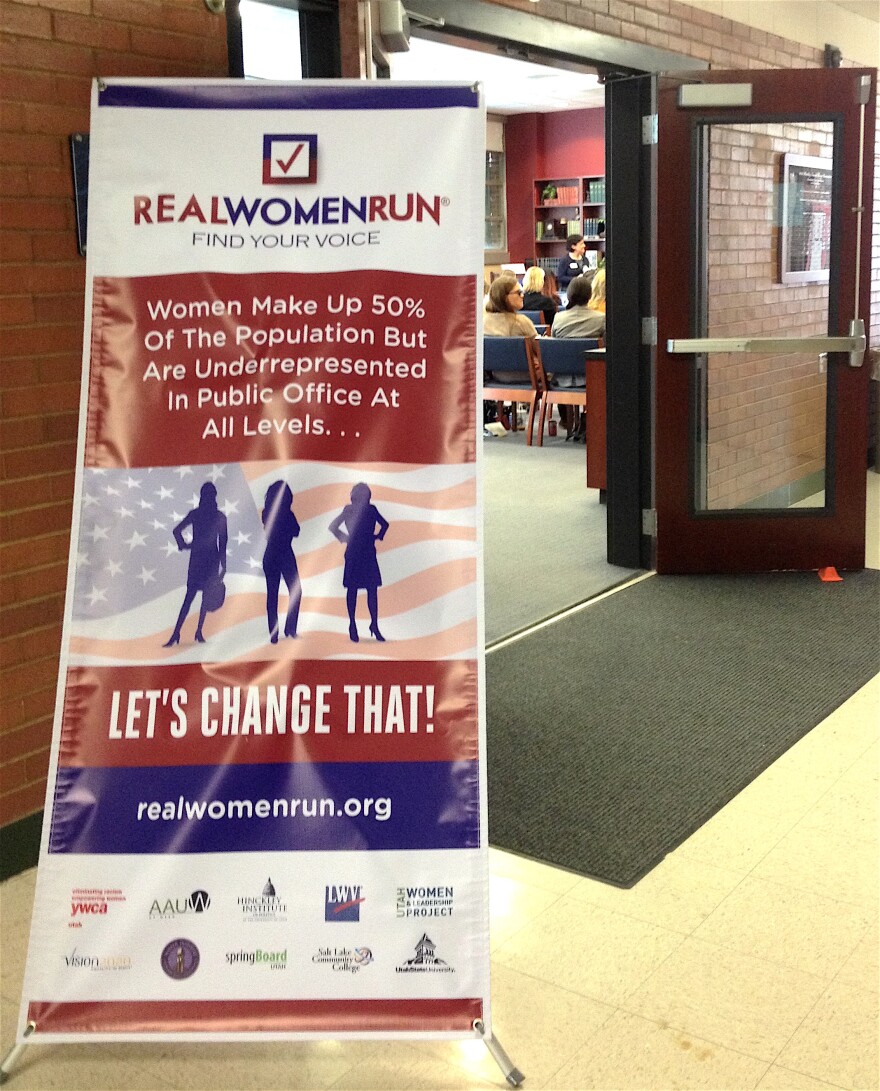There are currently 10 women serving in the Utah House of Representatives and 6 in the state senate. Together they make up 15% of the 104 elected state legislators. This puts Utah in the bottom 10 states for percentage of women represented in the state legislature.
There are a lot of reasons for the disparity between men and women serving as elected state officials, but according to Katie Ziegler with the National Convention of State Legislatures, none of them has to do with electability:
“The research has shown that there’s not bias at the ballot box. You have to take a step back and realize that when you look at the numbers, women aren’t running for state legislative offices in the numbers that would increase the women elected. Put more simply, women aren’t running so they’re not getting elected. When women run, women win.”
Except when they don’t, which we’ll get to in a moment.
Maybe it’s not obvious why we need more women in office. But we live in a representative democracy and that means in theory that our legislative bodies should look like our population. In Utah, our population is 49.7% female, but our legislature is only 15% female, which isn’t very “representative.”
Ziegler says that women running for state legislatures can lead to more women in office all the way up the chain.
“Looking nationally at higher offices such as congress, about 50% of members of congress previously served in state legislatures, and so you think about political candidates as existing in a pipeline, and there’s a pool of people who will maybe someday make a run for congress. And there aren’t a lot women in that pool.”
One way to add women to that pool is by actively recruiting women to run.
“Women don’t tend to be self starters as far as political candidacy goes. It takes recruiting a woman, someone asking her: you should do it, you should put your hat in the ring,” Ziegler said. “Women that I’ve worked with have told me over and over ’Someone asked four times before I said yes.’”
In Utah that push for more women to run in the first place comes from a group called Real Women Run. The nonpartisan organization holds trainings for potential female candidates on how to manage a campaign, how to fundraise, how to work with the media, even hands-on stuff like how to actually file for candidacy.
Pleasant Grove resident Xani Haynie showed up to one of these trainings back in January. By the end of the all-day workshop, she decided she was going to run as a Republican for a seat in the Utah House of Representatives.
“We basically only have one demographic making our laws. I think we need more women on Capitol Hill. We only have 13% in the House of Representatives and I think we need to encourage more women to run.”
The incumbent in Haynie’s district is Republican Representative Brian Greene, and no one was signed up to run against him.
“I knew that no one else was going to step up to the game and I had done my research and was starting to have backing from my local community so for me that was the decision. Someone needed to step up.”
I caught up with Haynie at the Utah County GOP Convention in April, where the delegates had just voted in her race.
“The voting went okay. I landed at 33% approval,” said Haynie.
She needed 40% to move on to a primary, and last election she wouldn’t have had enough to stay in the race, but a new state law passed in 2014 gives candidates two routes to getting elected: the old caucus and convention route and a new signature-gathering route that can get candidates directly onto their party’s primary ballot. You can even do both, so if you’re a first-time candidate like Haynie running against an incumbent like Representative Greene, you can try your best to get delegates to vote for you at the convention AND you can gather voter signatures as a back up.
“I started gathering signatures in February and I knocked on about 800 doors — that was an interesting experience in February, but it was a good experience. [JP: How many signatures did you need?] I needed 1,000 and I got about 1800 because about 40% were verifiable.”
So, she “forced a primary” so to speak, and prepared to face her opponent. And then her own party started actively campaigning against her. The Utah GOP was opposed to the new law allowing signature-gathering from the beginning, even going to so far as suing the state to overturn it. The Utah County GOP financially supported and endorsed Representative Greene, as the traditional nominee from the convention, and refused to recognize candidates like Haynie who gathered signatures to get on the ballot.
In June, she lost in the primary by fewer than 200 votes. There is no Democratic candidate for the district, so Representative Brian Greene will hold the seat for another term.
It’s too early to tell how much of an impact the signature-gathering option will have on Utah elections, especially when it comes to the representation of women. Utah is only one of seven states that uses the caucus-convention primary system and with this new alternative path to getting elected – and all the resistance toward it from the Utah Republican Party – the 2016 election is a real experiment in what representative democracy looks like.
This story is part of the series Women Run The West – a public radio collaboration exploring the role of women in western politics. You can hear more stories at womenrunthewest.org.


